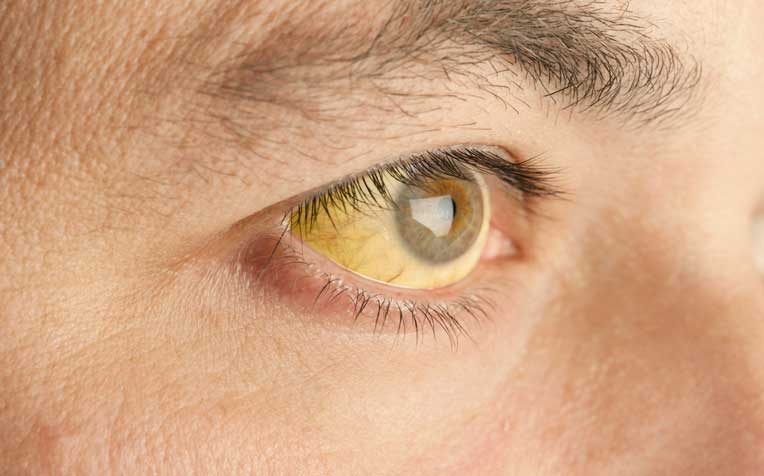HealthXchange will NEVER ask you to transfer money over a call. If in doubt, call the 24/7 ScamShield helpline at 1799, or visit the ScamShield website at www.scamshield.gov.sg.

Yellowing of eye whites and the skin are signs of obstructive jaundice.
Yellowing of the skin and whites of the eyes, light-coloured stools and dark urine could be signs of obstructive jaundice – a condition where normal drainage of bile from the liver to the small intestines is blocked.
Obstructive jaundice is not a disease in itself but a symptom of an underlying condition involving the liver, the gallbladder or the pancreas. It will usually require surgical intervention, and is also known as surgical jaundice.
“The most common cause of obstructive jaundice here is gallstones causing a blockage in the drainage of pathway of bile,” says Dr Tan Ek Khoon, Associate Consultant, Department of Hepato-pancreato-biliary and Transplant Surgery, Singapore General Hospital (SGH), a member of the SingHealth group.
The liver produces bile to digest food and deliver waste products to the intestines for elimination. When bile drainage is obstructed, bilirubin – a byproduct of red cell recycling – builds up in the liver and spills over to the bloodstream, causing the skin and whites of eyes to turn yellowish.
It is important to distinguish between the possible causes of obstructive jaundice. While the common causes are related to gallstone disease, the more sinister causes are related to cancer (pancreatic cancer, bile duct cancer, or less commonly liver cancer).
One of the main distinguishing symptoms between benign and malignant causes is pain.
Painful obstructive jaundice is usually related to gallstones, while painless obstructive jaundice tends to be related to tumours. The reason for this difference is that stones tend to harbour bacteria and cause bile duct infection, resulting in pain and fever.
Interestingly, as pain is not a key feature for malignant causes, patients with tumours tend to seek expert help later. These patients may also have worrisome symptoms of weight loss and loss of appetite.
Two types of jaundice (surgical and medical jaundice)
Obstructive or surgical jaundice is different from medical jaundice. Patients with medical jaundice will have yellowing of the skin, without dark urine or light-coloured stools. Medical jaundice can be related to:
- Hepatocellular jaundice - caused by a liver condition such as hepatitis and liver cirrhosis; and
- Haemolytic jaundice (blood disorder) - a result of increased breakdown of red blood cells due to underlying conditions such as thalassaemia, autoimmune disease or malaria.
All these types of jaundice lead to an abnormal increase of bilirubin, causing the yellowing of the skin.
What causes obstructive jaundice (surgical jaundice)
As mentioned above, there are both benign and malignant causes of obstructive jaundice.
- Benign causes: Gallstones or cysts in the bile ducts (choledochal cyst), narrowing of the bile ducts (bile duct strictures), pancreatitis (inflammation of the pancreas).
- Malignant causes: Cancerous tumours in the pancreas, bile duct, gallbladder and liver.
Malignancy causing complete blockage of bile can result in significant itching due to accumulation of bile pigments within the skin, and malnutrition as bile is part of the digestive system.
Read on to find out more about symptoms of obstructive jaundice and its treatment options.
Ref: P16
Conditions & Treatments
Public Events
Get the Health Buddy App
© 2025 SingHealth Group. All Rights Reserved.













 Get it on Google Play
Get it on Google Play